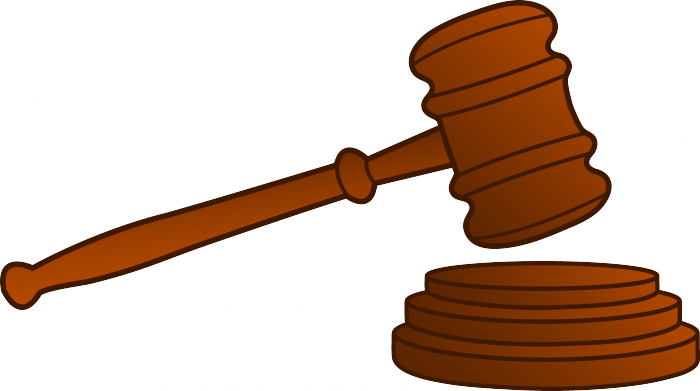The application of law is a process of activity of a state authority. There are three stages to applying the law:
1. Establishment of the factual circumstances of the case.
2. Definition of legal characteristics.
3. Making a decision and bringing it to the performers.
Stage One
Each stage is applied by the court with strict observance of a certain order. So, establishing the events that actually happened, the court finds out:
- everything that happened, really took place;
- legally valid facts, as well as their validity;
- the identity of the citizen who was a participant in the events, his age, occupation, state of health, psychological state, character, and so on.

The most important thing at this stage is that it is necessary to prove the facts using the theory of evidence, which assumes their formal and free assessment. The main stages of the application of law and free assessment of evidence they are widely used in our country, in particular, in the norms according to which evidence is assessed by a judge on the basis of personal convictions. This should be a thorough discussion of the circumstances of the case, which does not tolerate the manifestation of emotions.
Legal eligibility category
The application of law, the concept, signs, stages and ideas of a formal assessment of evidence is expressed in the admissibility of evidence, which implies the following:
- Determining the source of evidence: testimony, as well as all participants in the case, expert opinion, evidence (material and obtained during investigative actions) and so on.

- Establishment of prohibitions on the use of evidence that was obtained in violation of the procedure.
Also, evidence that was obtained without the permission of the court, if this was provided for by law, does not have force.
- A prescription to use only specific types of evidence, for example, an agreement between organizations can only be confirmed by written documents.
Stage Two
The principles and stages of the application of law during the determination of the legal nature of the events that have taken place help to resolve issues related to the use of a particular rule. It also happens that several norms can be applied to the situation. In this case, their competition arises. From them, the most appropriate for this particular action is selected.

Next, we find out how true the rule of law is and whether it actually works today. Here we can say that the text of the norm must be authentic, that is, it must be contained in the corresponding code and in its latest revision.
The application of law, the concept, the subjects, the stages and the effectiveness of the rules are determined by clarifying the following questions: does it have legal force, has it been canceled, does it work in this particular region, where the case is being resolved, does its force affect subjects that participate in the investigated legal relationship.
When choosing the most correct rule of law, certain conflicts may arise, since there may be several existing rules that govern the public relations in question. In such a situation, preference should be given to the norm that is most suitable. The choice is made based on the following rule: if the rules were adopted by different bodies, then the one that will be from the higher authority is used.If they were accepted by one body, then the latest will be applied.
In addition, the application of law, the concept, types, stages of determining legal characteristics also include the analysis of the content of a legal norm, the identification of its exact meaning, that is, its interpretation. This suggests that it is necessary to determine exactly what the meaning was laid down by the legislator in the wording of the text. In addition, it is at this stage that any gaps in law are overcome.
Stage Three
Making a decision also consists of several actions. The application of law, the concept, types, stages at this moment help to confirm the rights and obligations of the parties or to establish a measure of responsibility.

This stage is very complex. It is she who makes it possible to make a decision that will be correct in relation to this particular citizen. This decision acquires the form of a law enforcement act, which serves as the basis for the emergence of legal relations.
The stages of applying the TGP law also include control over the execution of the decision, its implementation. Control makes it possible to most fully implement the solution.
Acts and stages of application of the law are not always enforced. Very often, individuals and willfully comply with the requirements of the decision. Compulsory enforcement of judgments is generally enforced.
How judicial acts apply
At the stage of the process of applying the law, such as a court decision, creative thinking is required. As a result, a written act must be drawn up, that is, a document that explains the circumstances of the case, their analysis is carried out, an assessment and a state-imperious order are given. The act of applying the law is a concrete embodiment of the rule of law in life, by order of the state body, addressed to a specific participant in the relationship.

Being an official document, the decision is drawn up in the proper form, namely: it must bear the date, place of adoption, name of the authority, signatures of authorized persons and the seal of the court.
So, the act of application of legal norms means an individual, state-imperious prescription obtained as a result of a decision on the case. In other words, the stages of the process of applying the law and the act are an official document that is issued in a particular case.
Signs of legal acts of application
- Adopted necessarily by a judge or court.
- They are mandatory.
- The rules apply specifically to certain individuals.
- Drawn up in the form of a document.
- They are legally significant facts, that is, lead to the emergence, amendment and termination of legal relations.
- Adoption in accordance with the law, reliance on legal establishment.
- Providing, if necessary, state coercion.
How acts of application of law differ from regulatory legal
Normative legal acts contain prescriptions that have a general character - the concept and stages of application of law and the rule of law, and law enforcement acts are understood as individual prescriptions that specify the provisions of normative legal acts with respect to certain persons in specific situations.

For this reason, legal acts are legal sources. While acts of application can be attributed to their number, since they do not contain the concept and stages of application of law. Legal norms are aimed at those who come under certain conditions; they govern specific types of social relations. They are designed for continuous use. The individually-specific instructions contained in the acts of application of the law are addressed to specific subjects of the law, regulate certain situations and are usually one-off. In addition, normative legal acts are embodied as laws, decrees and other acts that are normative in nature.In turn, acts on the application of law are issued by decrees, decrees, sentences, which are individual in nature.
What is the structure of the enforcement act
The enforcement act has a formal content, as it is a document with legal force. The classical version of the structure of such an act implies a sequence of interconnected elements: the introductory, descriptive, motivational and resolutive parts of the decision.
Introductory part of the act
As a rule, in this part of the stage of application of the law, the name of the authority and full name are stated. case person; name of the case; time and place where it was examined. All this can be attributed to the details of the act, as well as to the fact that it is really legal.
Descriptive part
Here is written in writing the plot of the legal case. It describes all the factual circumstances of the case identified by the judge that have legal significance. The stages of applying the law on the basis of the principles of relevance and admissibility make it possible for the law enforcer to make a small analysis of material relations. It is subject to legal regulation. Thus, the foundation is laid for an objective and impartial legal decision.

In case of jurisdictional enforcement, the narrative at this stage of the application of the law contains a statement of the evidence obtained, on the basis of which a decision is made on the legal entity.
Motivation part
This part of the act sets out the legal reasoning of the decision described below in the case under review. Usually these are articles from codes according to which a decision is made at the stage of application of a law, such as a verdict. The motivation part ensures fair and lawful drafting of the act. Legal argumentation shows that the decision does not have any arbitrary speculation and is made in accordance with the law in accordance with justice and expediency, therefore, the main stages of the application of law have justice and legality.
The operative part
This part indicates the subjects and stages of application of the law, as well as the content of the decision on the basis of the rule of law. This defines the rights and obligations of all entities to which the norm applies or rewards or punishments are determined. Next is the signature of the official and, if necessary, the seal of the authority that applied the law.
So we examined exactly what stages the case goes through during consideration, as well as what parts the law enforcement act (court decision) consists of, and what exactly is indicated in it.
